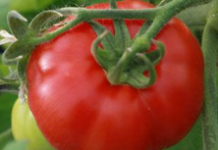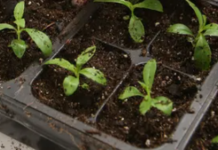Warmer weather is generally better for producing herbs in the home garden. What is an herb? Herbs are plants that are used as flavoring agents. Mild or savory herbs impart a delicate flavor to foods, while stronger or pungent herbs add zest. Some additional herbs are used for medicinal, aromatic, or ornamental purposes.
The leaves of most herbs are the part of the plant that is used, although seeds or roots of some herbs also can be used. Herbs are used in small quantities, and usually only a few plants are needed to provide sufficient fresh and dried herbs for an entire season.
The ornamental value of herbs makes them useful in flower beds, borders, rock gardens, and corner plantings. Some herbs are annuals, while others are perennial or come up year after year. You can plant annual herbs in your annual flower or vegetable garden. Perennial herbs should be located at the edge of the garden where they won’t interfere with next year’s soil preparation. Many gardeners establish a small herb garden near the back door. Generally, a 6- to 10-foot square or rectangular area is sufficient, but you also can use circular or free-form designs. Locate the tallest herbs at the back of the plot.
Care for the herb garden is similar to that of a vegetable or flower garden. Select a sunny, well- drained location, apply a balanced fertilizer, but avoid excessive use of nitrogen fertilizers. Water as necessary during dry periods. Generally, you will need about an inch of water per week, if not supplied by natural rainfall. A mulch will help conserve soil moisture and reduce weed growth as well. The mints prefer moist soil and require more frequent watering.
Annual and biennial herbs can be established by planting the seed directly in the garden or starting seed indoors for transplanting to the garden. You can save seed produced by the herb plants for next year’s crop or obtain seed from your local garden center or seed catalog. To save your own seed, harvest the entire seed head after it has dried on the plant. Allow the seeds to dry in a protected location that is cool and dry. After the seed heads are thoroughly dry, thresh the seed from them and discard the trash. Store in labeled jars in a dark, cool, dry location. Some herb seeds such as dill, anise, caraway, and corriander can be used for flavoring.
Perennial herbs can be propagated by cuttings or division. Divide plants every 3- 4 years in the early spring. The plants should be dug up and cut into several sections. You can also cut 4- to 6-inch sections of the stem and root them by placing the cuttings in moist sand in a shady area. In 4-8 weeks, roots should form. Herbs such as sage, winter savory, and thyme can be propagated by cuttings. Chives, lovage, and tarragon can be propagated by division of the roots or crowns. Apple mint forms runners or stems that run along the ground and can easily be propagated by covering a portion of the runner and allowing it to form roots.
Harvesting
Leaves of many herbs such as parsley and chives can be harvested for fresh seasonings. You can gradually remove some of the leaves as you need them, but don’t remove all the foliage at one time. These plants will produce over a long period of time if they are well cared for. Chervil and parsley leaves can be cut and dried any time. Lovage leaves should be harvested early during the first flush of growth. On rosemary and thyme, clip the tops when the plants are in full bloom. Usually leaves and flowers are harvested together. Basil, fennel, mint, sage, summer savory, sweet marjoram, tarragon, and winter savory are harvested just before the plants start to bloom.
Drying herbs
After harvesting, hang herbs in loosely tied bundles in a well-ventilated room. You can also spread the branches on a screen, cheesecloth, or hardware cloth. For herbs where leaves only are needed, the leaves can be spread on flat trays. Keep dust off the herbs with a cloth or similar protective cover that allows moisture to pass through. It is generally best to dry naturally in a cool, dark room rather than to use artificial heat. This can be done commercially, but you may lose flavor and quality by attempting to use artificial heat.
When herbs are thoroughly dry, they should be put in airtight containers such as sealed fruit jars and stored in a cool, dark location. Any sign of moisture accumulating in the jars indicates the herbs are not thoroughly dry. Flower stalks should be pulverized before putting them in the jars, but foliage herbs can be stored either pulverized or as whole leaves, depending on their intended use.




